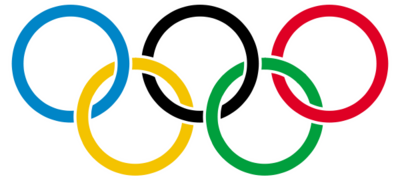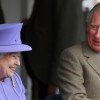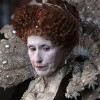Getting the Arts into Shape
written for The Spectator 9 February 2011
From 18th Century Shakespe arian pretenders to the new establishment, if you find yourself looking for an artistic respite from sports overload at the Olympic Games, there will be few more exciting places to be in 2012 than Shakespeare’s Globe. In the spirit of Olympic internationalism, the Globe will be inviting 38 different companies from around the world to perform the complete plays of Shakespeare in their own languages (it seems they don’t count Double Falsehood either). For all that I’ve complained about the odd misstep, the Globe, with its inspirational research department, remains one of the greatest sources of theatrical energy in Europe. This latest project will only affirm that position. As director Dominic Dromgoole puts it, ‘It has long been recognised that Shakespeare, as well as a great playwright, has become an international language.’ So, even if you’re booking now to escape London during the philistine scrum of the Games, don’t arrange to leave until the theatre season finishes in June.
arian pretenders to the new establishment, if you find yourself looking for an artistic respite from sports overload at the Olympic Games, there will be few more exciting places to be in 2012 than Shakespeare’s Globe. In the spirit of Olympic internationalism, the Globe will be inviting 38 different companies from around the world to perform the complete plays of Shakespeare in their own languages (it seems they don’t count Double Falsehood either). For all that I’ve complained about the odd misstep, the Globe, with its inspirational research department, remains one of the greatest sources of theatrical energy in Europe. This latest project will only affirm that position. As director Dominic Dromgoole puts it, ‘It has long been recognised that Shakespeare, as well as a great playwright, has become an international language.’ So, even if you’re booking now to escape London during the philistine scrum of the Games, don’t arrange to leave until the theatre season finishes in June.
There’s still no word, though, on whether the best sports play in London for years will make a return for the Games. Amphibians, which closes this week, not only tells the story of two Olympic swimmers, but also makes tangible the alienating insecurities of the athletic body, thanks to a strong element of physical theatre. As Becky Horsbrugh wrote on the Arts Blog when the play opened Amphibians is a brilliant work. Set in the disused Bridewell Theatre, the performance situates the audience in the very space the athletes have to conquer.
There has been a vogue recently for site-specific performances in disused community spaces (the overly ambitious Hall springs to mind, best eviscerated after my own heart by Matt Trueman) but few that do real justice to the communal heritage invested in their sites. Amphibians is the great exception. It’s not merely the history exhibition in the bar: each bead of sweat from the performers is a testament to what a swimming pool like the Bridewell can do for a city community, while the hollow echoes of the rusting porcelain tell their own dissonant story.
Among the production’s greatest strengths are Richard Williamson’s lighting design, revealing cavernous new spaces in unnoticed crannies, and Kate Sagovsky’s mesmerizing choreography – although they’re let down by the occasional wooden moment of dialogue. Yet, despite conforming to the limited narratives of the sports movie (the coach seeking redemption for his own mistakes; the young people forced to chose between success and romance; the predictably gendered problems with confidence), Amphibians triumphs by making each potential cliché new. Even the high-risk touches of magic realism enrich where they could have destabilised: Arion, an Ariel-like spirit of the pool, haunts the action like an airy puppet ill at ease in her own taut body, a questioning Chorus-leader to the three all-too-human protagonists. The effect is unsettling, but almost sacral.
Amphibians only exists thanks to a generous grant from the Arts Council. Like all major institutions, the Arts Council gets plenty of stick from those it can’t please, but this is a case for unstinting congratulations: the Arts Council living up to its best ambitions to nurture the next generation of innovative British theatre. But it’s disappointing that Amphibians has not yet secured funding to be revived as part of the 2012 Cultural Olympiad. This is as perfect an example as you’ll find of how the Olympics should be engaging with the arts. It would be a crime if this play couldn’t return in 2012.






